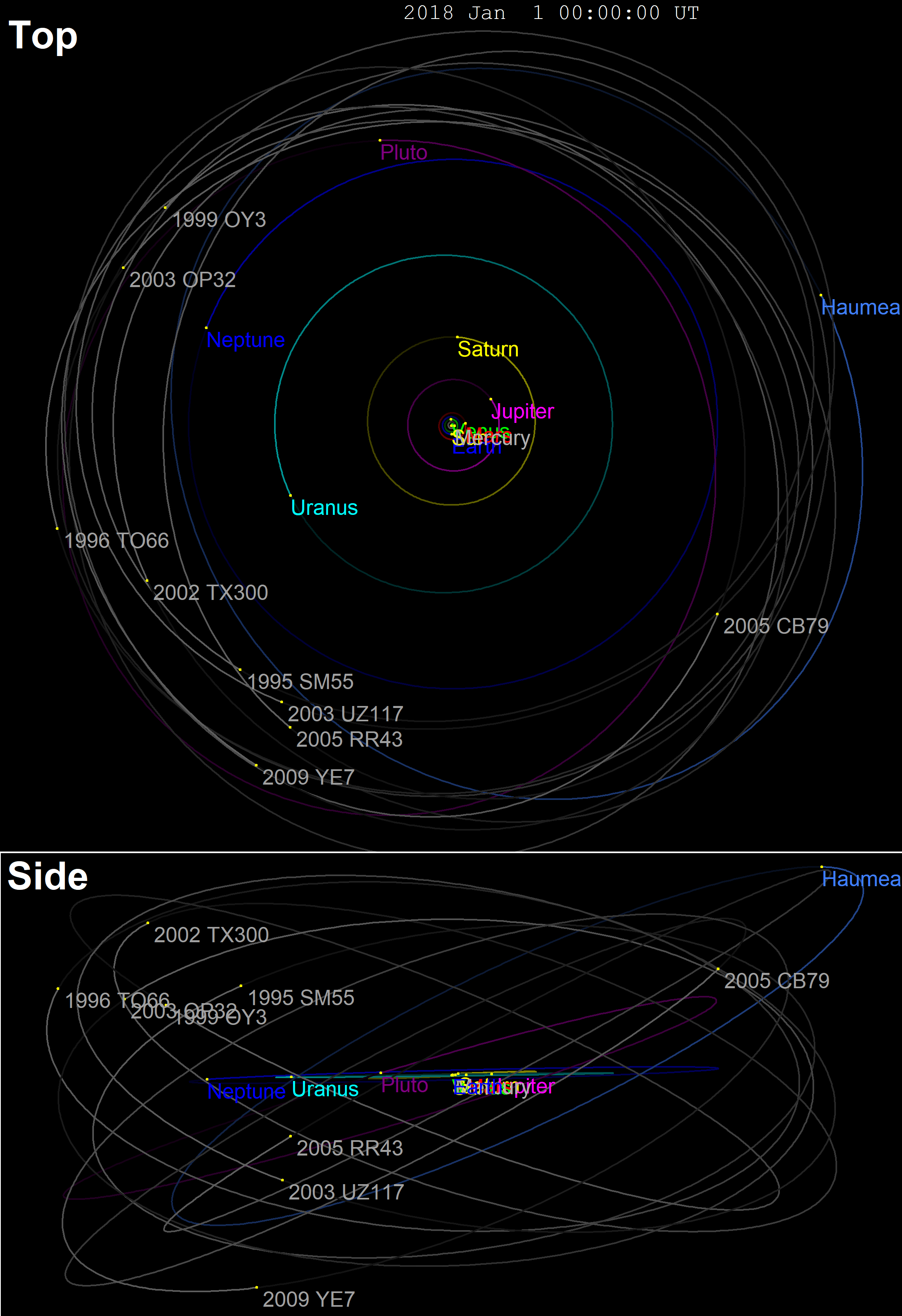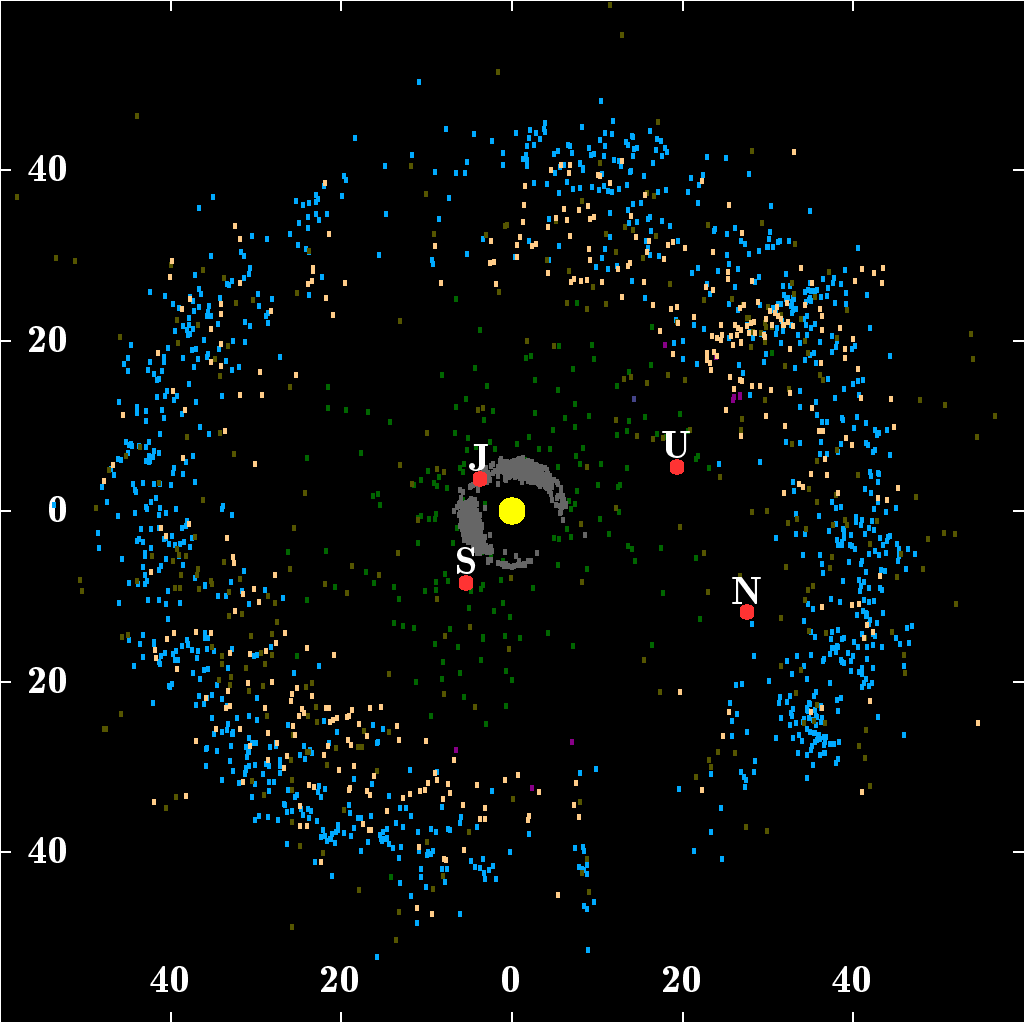|
Haumea Family
The Haumea or Haumean family is the only identified trans-Neptunian collisional family; that is, the only group of trans-Neptunian objects (TNOs) with similar orbital parameters and spectra (nearly pure water-ice) that suggest they originated in the disruptive impact of a progenitor body. Calculations indicate that it is probably the only trans-Neptunian collisional family. Members are known as Haumeids. Members Characteristics The dwarf planet is the largest member of the family, and the core of the differentiated progenitor; other identified members are the moons of Haumea and the Kuiper belt objects , , , , , , , , and , all with an ejection velocity from Haumea of less than 150 m/s. The brightest Haumeids have absolute magnitudes (H) bright enough to suggest a size between 400 and 700 km in diameter, and so possible dwarf planets, if they had the albedos of typical TNOs; however, they are likely to be much smaller as it is thought they are water-icy bodies ... [...More Info...] [...Related Items...] OR: [Wikipedia] [Google] [Baidu] |
Kuiper Belt Object
The Kuiper belt () is a circumstellar disc in the outer Solar System, extending from the orbit of Neptune at 30 astronomical units (AU) to approximately 50 AU from the Sun. It is similar to the asteroid belt, but is far larger—20 times as wide and 20–200 times as massive. Like the asteroid belt, it consists mainly of small bodies or remnants from when the Solar System formed. While many asteroids are composed primarily of rock and metal, most Kuiper belt objects are composed largely of frozen volatiles (termed "ices"), such as methane, ammonia, and water. The Kuiper belt is home to most of the objects that astronomers generally accept as dwarf planets: Orcus, Pluto, Haumea, Quaoar, and Makemake. Some of the Solar System's moons, such as Neptune's Triton and Saturn's Phoebe, may have originated in the region. The Kuiper belt was named after Dutch astronomer Gerard Kuiper, although he did not predict its existence. In 1992, minor planet (15760) A ... [...More Info...] [...Related Items...] OR: [Wikipedia] [Google] [Baidu] |

